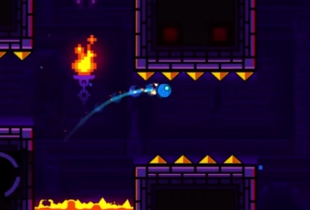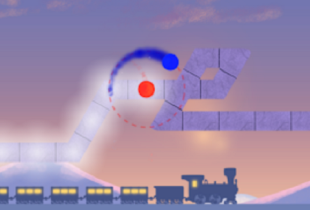Game description:
Just Shapes And Beats is a rhythm survival game where players guide geometric forms through stages filled with patterns and hazards linked to music. The player’s main task is to stay alive while avoiding dangerous objects that move and appear in sync with a track. Each level features a new song, and every beat triggers visual changes, creating an environment where movement and timing must align with the rhythm. The simple shape-controlled mechanic hides a layered challenge that grows as the game advances.
Structure of Levels and Game Modes
The game introduces multiple ways to play, allowing users to experience different tracks and approaches. Story mode presents a sequence of stages connected by short narrative transitions. Challenge mode randomizes levels, pushing players to survive as long as possible. Playlist mode lets users choose specific tracks they want to replay or practice. There is also a relaxed option where players can explore the game without the pressure of failing a level. Each mode retains the core mechanic: dodging anything colored as a threat while syncing movement to music.
Core Elements and Interactive Options
Throughout just shapes and beats, players rely on a small set of mechanics that expand through interaction:
· Moving freely within a rectangular area
· Dashing to avoid fast or unavoidable patterns
· Watching visual cues to anticipate danger
· Cooperating in multiplayer to revive teammates
· Restarting from checkpoints after failure
These systems offer the tools needed to react, recover, and learn. Timing dashes correctly can mean the difference between surviving or being caught in a trap. Playing alone or with friends introduces different strategies, especially in levels where cooperation can extend a run. The minimalist design of shapes allows full focus on movement and beat recognition.
Design Based on Rhythm and Flow
The audio experience in the game drives its entire structure. Every movement on screen is influenced by the beat, and every level is crafted to fit the energy of the soundtrack. Players must develop a sense of rhythm to understand and predict the appearance of threats. Fast-paced songs increase pressure and reduce the margin for error. Slow tracks, in contrast, allow for tighter control but often introduce irregular patterns. The music isn’t just a background—it’s a guide that shapes the entire experience.
Just shapes and beats rewards attention, memorization, and adaptation. The more a player engages, the more they learn how to read patterns and stay in control. Higher levels introduce new mechanics and demand better timing. Players looking to improve can replay levels to practice sections or attempt harder variations. Over time, what once seemed chaotic begins to feel predictable and manageable.
























































































































































Comments